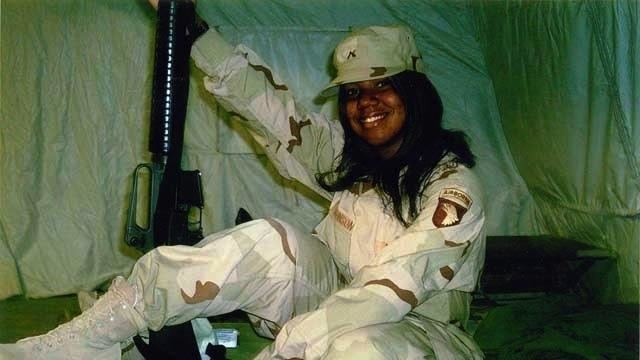Allegiance United States Years of service 2003–2005 | Name Death LaVena | |
 | ||
Rank Private First Class (PFC) Awards Army Good Conduct Medal Army Commendation Medal | ||
Similar Enhanced interrogation techniques, Sexual violence in the Iraqi insurgency, Abu Ghraib torture and prisoner abuse | ||
LaVena Lynn Johnson (July 27, 1985 – July 19, 2005) was a Private First Class in the United States Army whose death, officially ruled a suicide, has attracted international attention amid allegations that her death was the result of rape and murder.
Contents
The death of lavena johnson unsolved mysteries
Biography

The daughter of Dr. John Johnson, a service veteran, and Linda Johnson, Johnson was born and grew up in Florissant, Missouri.

The 5'1" African American honor student enlisted in the Army immediately after graduating from Hazelwood Central High School. She was deployed to Iraq and stationed in Balad. She had been there for eight weeks before her death on July 19, 2005, nine days before her 20th birthday.
Death and controversy
Johnson's death was officially ruled a suicide by the Department of Defense. However, her father became suspicious when he saw her body in the funeral home and decided to investigate. The Army initially refused to release information, but did so under the Freedom of Information Act after Representative William Lacy Clay, Jr. raised questions about it at the congressional hearings over Pat Tillman's death.
The autopsy report and photographs revealed Johnson had a broken nose, black eye, loose teeth, burns from a corrosive chemical on her genitals, and a gunshot wound that seemed inconsistent with suicide. Several reporters have suspected that the chemical burns were to destroy DNA evidence of a rape.
A spokesman from the House Armed Services Committee said in June 2008 that the committee was looking into Johnson's death, but they were not yet committing to a formal investigation. Christopher Grey, chief of public affairs for the U.S. Criminal Investigative Command for the Army has said that the case remains closed as far as they are concerned.
Following a February 2007 KMOV news report on Johnson's death, an online petition addressed to the House Armed Services Committee and the Senate Armed Services Committee was launched. This was followed by the creation of an official LaVena Johnson website dedicated to developments in prompting a new Army investigation of her death. The petition closed on May 24, 2008 with nearly 12,000 signatures; preparations are being made for delivery to the two committees. In July 2008, the online black activist group Color of Change launched another online petition calling on Henry Waxman, chair of the House Oversight Committee, to conduct a hearing into LaVena Johnson's death and the Army's handling of her case and others like it.
A documentary film about LaVena Johnson's family struggle for justice was made in 2010, directed by Joan Brooker and titled LaVena Johnson: The Silent Truth.
On July 19, 2011, the criminal justice students in the Cold Case Investigative Research Institute (CCIRI) run as a student club by three universities, selected Johnson's case as their case for investigation. The CCIRI's crime scene reconstruction aimed to help shed light on this case that has attracted worldwide attention. The CCIRI investigation did not agree with nor dispute the Army's findings. Sheryl McCollum of the Cold Case Investigative Research Institute calls the case "gut-wrenching." McCollum says the institute normally spends one year on a case, but spent three years on the LaVena Johnson case. In a phone interview with St. Louis Public Radio, McCollum said that she faults the Army for poor communication, but she does not disagree with its conclusion.
"The problem is – number one -- the way the notification happened. And the lack of information given to that family fast enough," McCollum said.
"There was nothing about this case that we could go back to the Army to say you need to re-look at it," she said. "We didn't have anything new. We didn't have anything that suggested wrongdoing."
